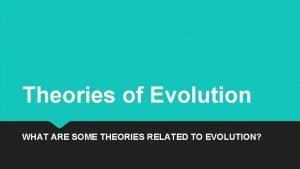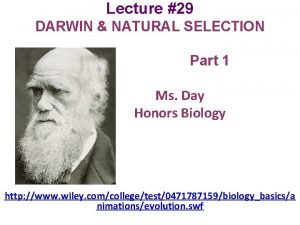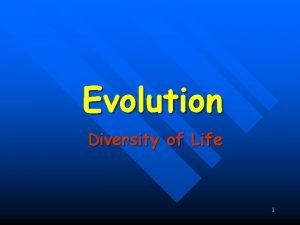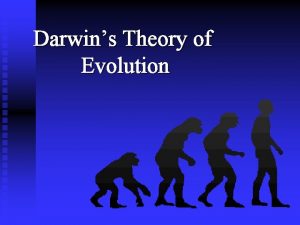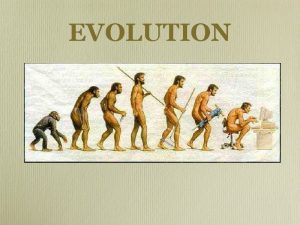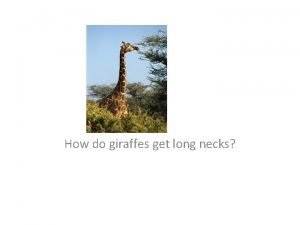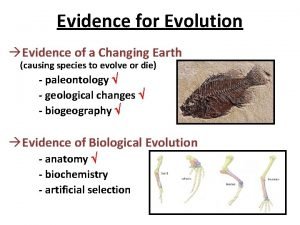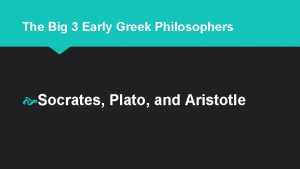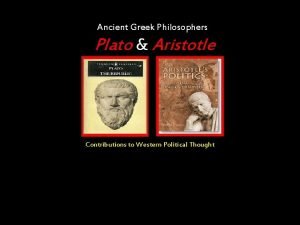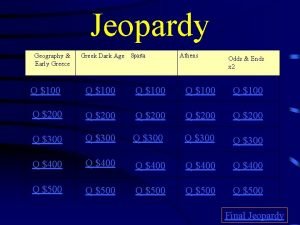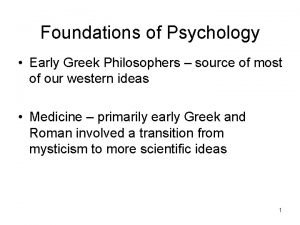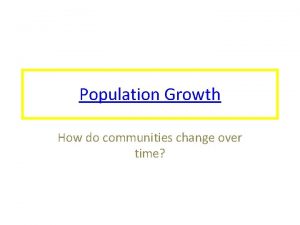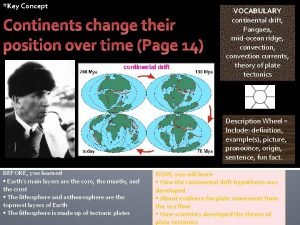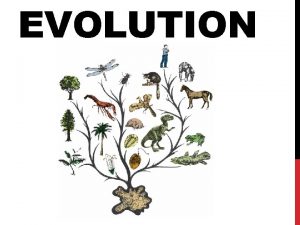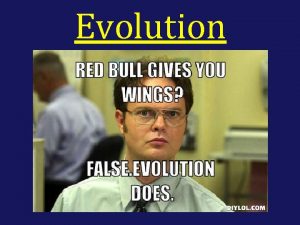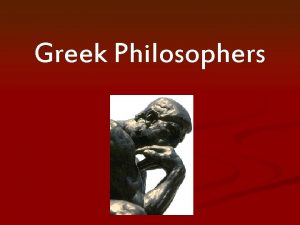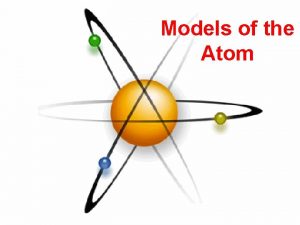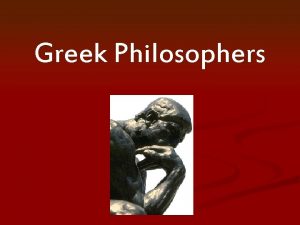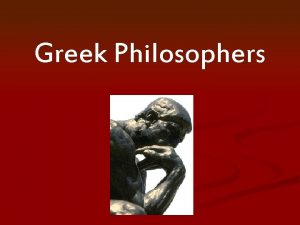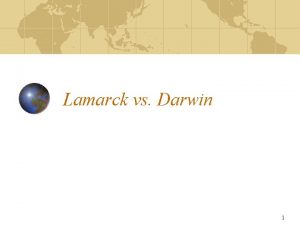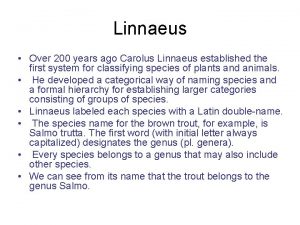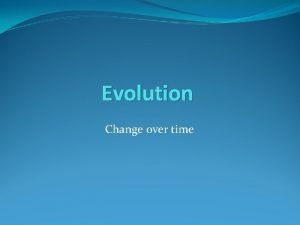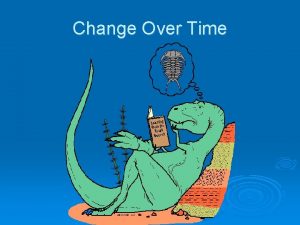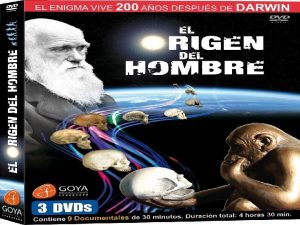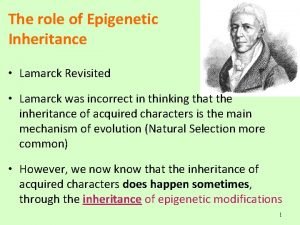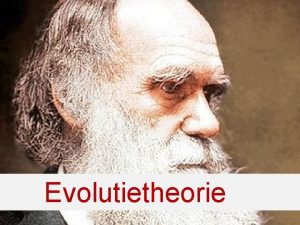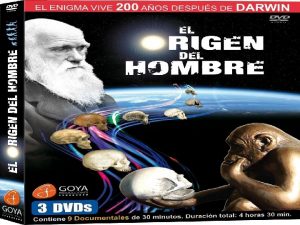Evolution Change Over Time Greek Philosophers Linnaeus Lamarck

















- Slides: 17

Evolution –Change Over Time Greek Philosophers Linnaeus Lamarck

Descent with Modification- Natural Selection • Explains the adaptations of organisms and the unity and diversity of life • Charles Darwin- The Voyage of the Beagle • Focused on adaptations • Explained how they arise through natural selection • Wrote Origin of Species

Artificial Selection, Natural Selection and Adaptation • Artificial selection- humans modify species; choose desired traits • Natural selection – traits are chosen by environment • Why Darwin came to this conclusion 1. members of a population vary in inherited traits

• 2. All species can produce more offspring than their environment can support • Therefore: individuals with traits that allow them to have a higher probability of surviving will reproduce : this will allow favorable traits to accumulate in the population

Natural Selection • Is a process in which individuals have certain inheritable traits survive an reproduce at a higher rate than do other individuals who lack these traits • Process will eventually increase the frequency of adaptations that are favorable in a given environment

Evidence of Evolution 1. Natural Selection Peppered Moths

Drug Resident Bacteria • use of antibiotics • MRSA- methicillin resistant Staphylococcus aureus

Evidence of Evolution (cont) 2. Analysis of similarities among different organisms Homology- similarity from common ancestry homologous structures- similar in structure but have different function Examples-

• Vestigial structures – remnants of structures that served a function in the organism’s ancestors • Examples:

• Analogous structures – different structure similar function • Examples:

Evidence (cont) Convergent evolution – independent evolution of similar features in different lineages- resemblance is analogous Fossil Record- documents the pattern of evolution showing that past organisms differ from present day organisms Biogeography- scientific study of geographic distribution

Phylogeny- Evolutionary History of a Species or Group of Species Archaea Bacteria Domains Archaea Bacteria Kingdoms Protista Fungi Eukarya Plant Animal

Phylogenetic Tree- Cladistics

How to Read Phylogenetic Tree

• • 1 represents the most recent common ancestor of all members 2 represents where lineage diverges 3 represents common ancestor of taxa A, B, and C 4 represents that taxa B and C diverged after their shared lineage split from the lineage leading to taxon A

Derived Characteristics

 Lamarck's theory of evolution
Lamarck's theory of evolution What was lamarck's theory of evolution
What was lamarck's theory of evolution Lamarck’s theory of evolution.
Lamarck’s theory of evolution. Lamarck's theory of evolution
Lamarck's theory of evolution Lamarck theory of evolution notes
Lamarck theory of evolution notes Lamarck theory of evolution notes
Lamarck theory of evolution notes Lamarck's theory
Lamarck's theory 3 greek philosophers
3 greek philosophers History of physical education in greece pdf
History of physical education in greece pdf Who are the big three in greek philosophy
Who are the big three in greek philosophy Greek philosophers ethics
Greek philosophers ethics Greek philosophers worksheet
Greek philosophers worksheet Ancient greece jeopardy
Ancient greece jeopardy Early greek philosophers in psychology
Early greek philosophers in psychology How to write a change and continuity thesis
How to write a change and continuity thesis Communities change over time
Communities change over time Continents change position over time
Continents change position over time The gradual change in a species over time
The gradual change in a species over time
